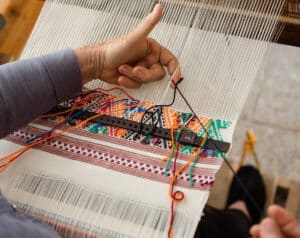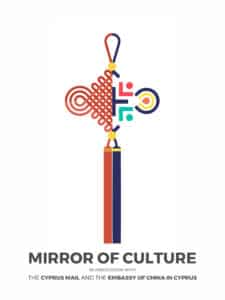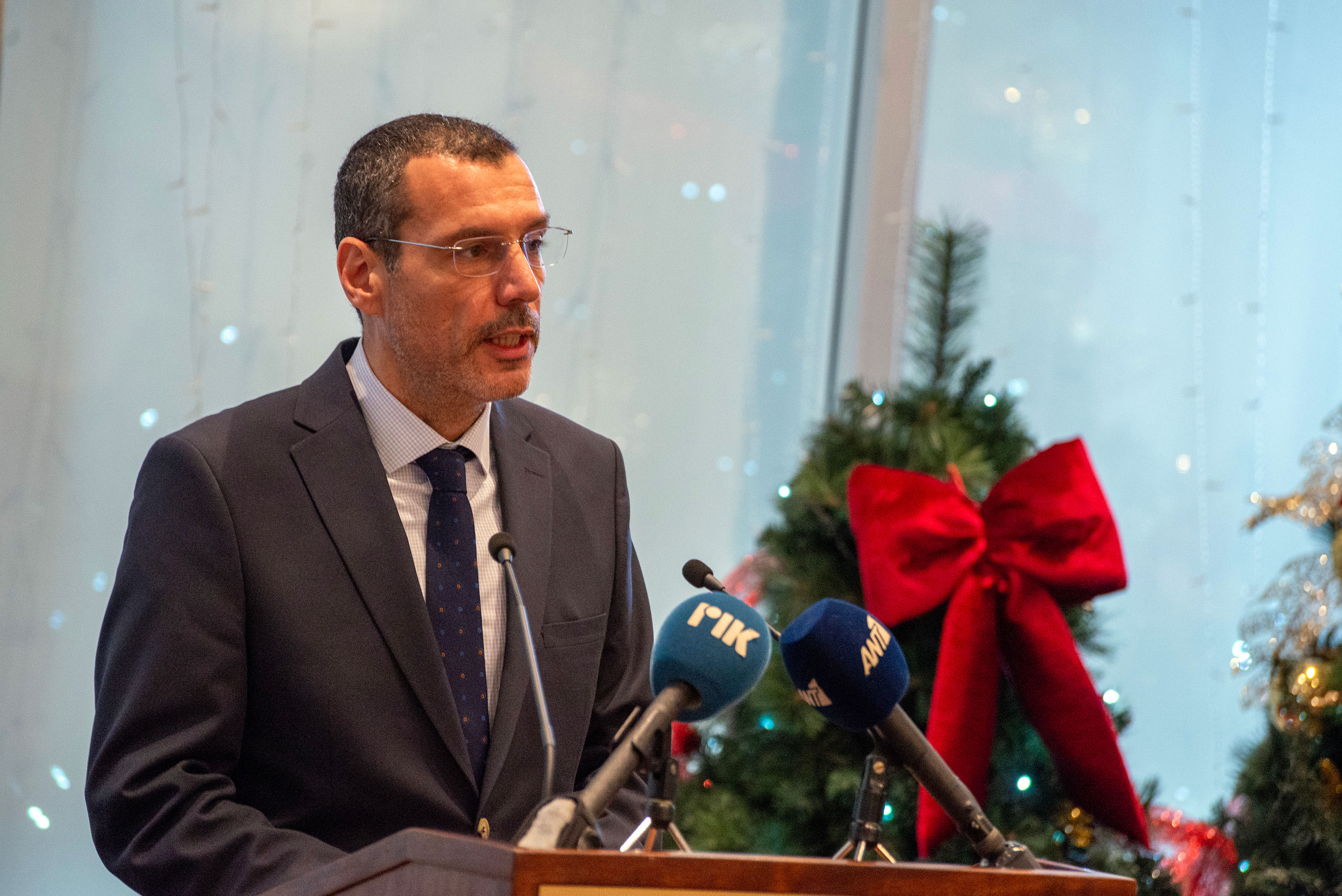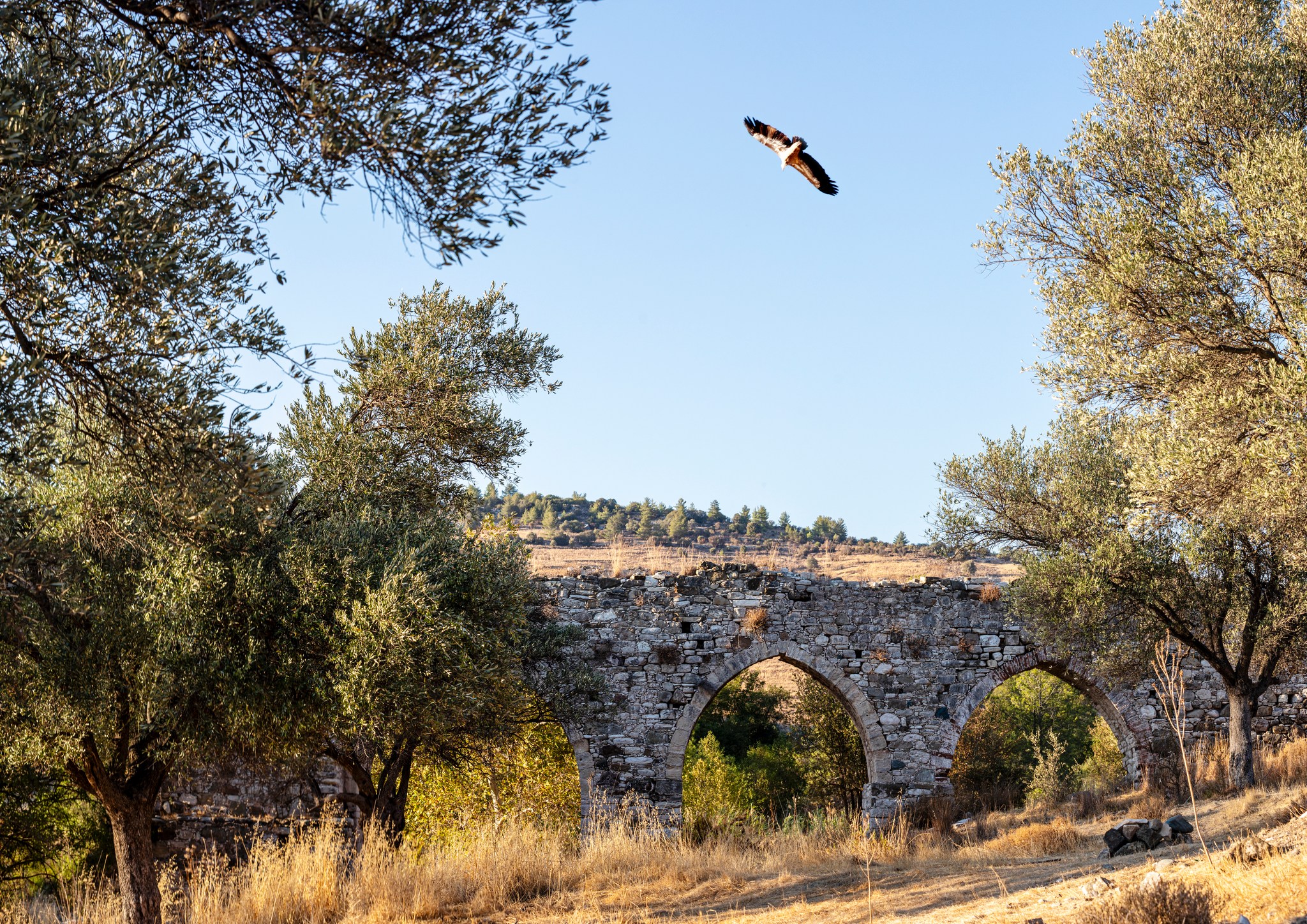Two women from very diverse backgrounds underline the importance of weaving stories and culture finds PAUL LAMBIS
Culture has a significant influence on our thoughts, attitudes and actions. It manifests itself in the way we dress, eat, speak and even in our local traditions and beliefs. For millennia, foreign cultures have had an undeniable impact on societies all over the world, from music to art to gastronomy.
Chinese culture, like that in Cyprus, is rich in material and spiritual values that have remained untouched through millennia. Despite centuries of outside influence, Chinese and Cypriot culture have both maintained their individuality and unique identity, but it is fascinating to observe the history of them and the influences on them, whether from China’s Hainan Province or the rustic hilltop village of Fyti in the Paphos region.
The renowned textile techniques of China’s Hainan Province’s Li ethnic minority date back more than 3,000 years. The Li people established an extensive system of different techniques, including spinning, dyeing, weaving and embroidering, and the Li textile techniques were included in the first set of China’s intangible cultural heritage in 2006.
As the principal weaving centre of the Paphos region and one of the most prominent in Cyprus, Fyti’s vibrant works of art, known as ‘fythkiotika,’ are listed in the Unesco Intangible Cultural Heritage catalogue. They are one of the oldest handicrafts, dating back to the mediaeval period (12-16th century) in Cyprus.
The intricate fabrics of Li and Fyti have inspired many artists, fashion designers and authors who have enthusiastically encountered the age-old heritage and brought new vitality to the traditional textiles.
Fu Yongying is the provincial inheritor to ancient Li textile skills. She has produced a series of popular products, including toys, sachets, earrings, bracelets, pendants and handbags, among many others, inspired by her successful experience with cultural and creative products.
“The Li people have the earliest weaving technology in Chinese history,” Yongying said. “Li women are skilled in spinning and weaving and are especially adept at weaving silk cotton.”
According to Yongying, the brocade they produce has a long history of magnificence and exceptional workmanship, dating back to the 5th century. Today, the Li are regarded as China’s pioneers in textile technology development.
Using their tropical surroundings to their advantage, they source various fibres from the rainforests and invent new weaving techniques.
“Along with hemp and cotton, the island has over 100 plant species that can be spun into weaving fibres; the most well-known of the textiles developed by the Li people is the Li brocade, with the technique still flourishing today.”
Fu Yongying’s inspiration and admiration for China’s intangible cultural heritage is undoubtedly fostering the development of China’s traditional textile sector, as does her Cypriot counterpart, Diamanto Diomidous, who is also the curator of the Fyti Weaving and Folk Art Museum and an advocate for preserving the region’s cultural heritage.

“Traditionally, weavers produce cotton, prepare it for weaving by removing the seeds in a cotton gin, and spin it into yarn before placing it on the loom,” Diomidous explained.
Although many indigenous Cypriot crafts are in danger of extinction due to their time-consuming nature and a scarcity of craftspeople with specialised skills, Diomidous has created a platform through the Deputy Ministry of Tourism that offers free mini apprenticeships to people interested in mastering the craft of weaving. “We have a significant number of participants who come from all over Cyprus because they are interested in learning the traditional art of weaving.”
Both Yongying and Diomidous understand the importance of preserving their historical legacies, culture, and knowledge through their craft, which is distinguished by its variety of designs and embossed geometrical and colourful patterns.
Whether created on a waist loom or the more advanced foot loom, these embroidery skills have evolved over time from a necessity to a highly valued art form, often used as a method of storytelling whose colourful threads speak about the richness of two ancient civilisations, their philosophies, moralities, and ethics that have shaped modern society as we know it today.
About Mirror of Culture

Culture is the universal language of mankind that transcends many barriers, including language and geography. Our aim is to work with diverse cultural communities in Cyprus to share and promote our vibrant cultures to further bolster the bonds among all the people of Cyprus and celebrate the diversity of cultures in the world.
Furthermore, the initiative understands the importance of cultural preservation, which is an important way for us to transmit traditions and practices of the past to future generations.
View the video on Cyprus Mail’s YouTube Channel: LINK









Click here to change your cookie preferences